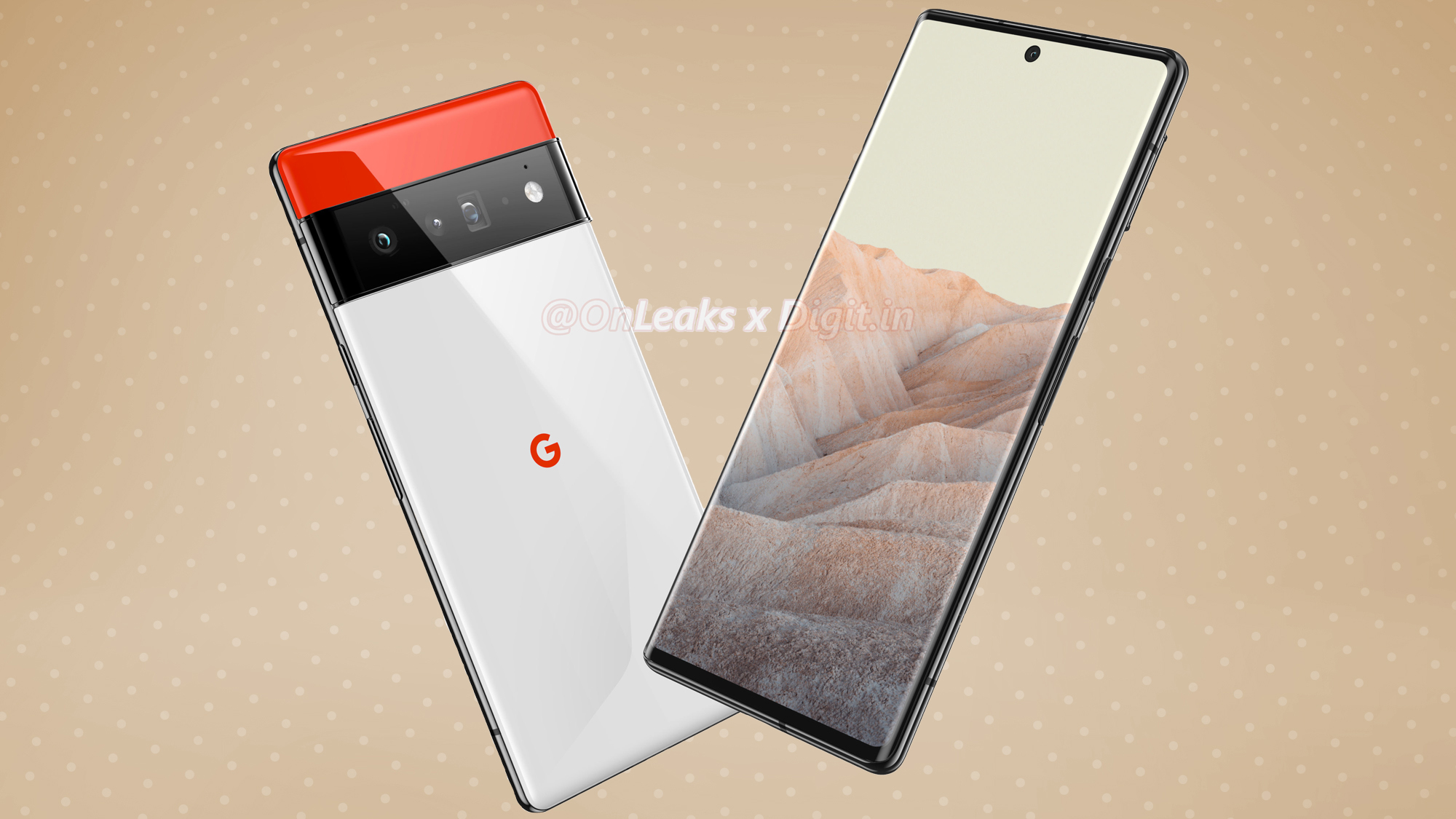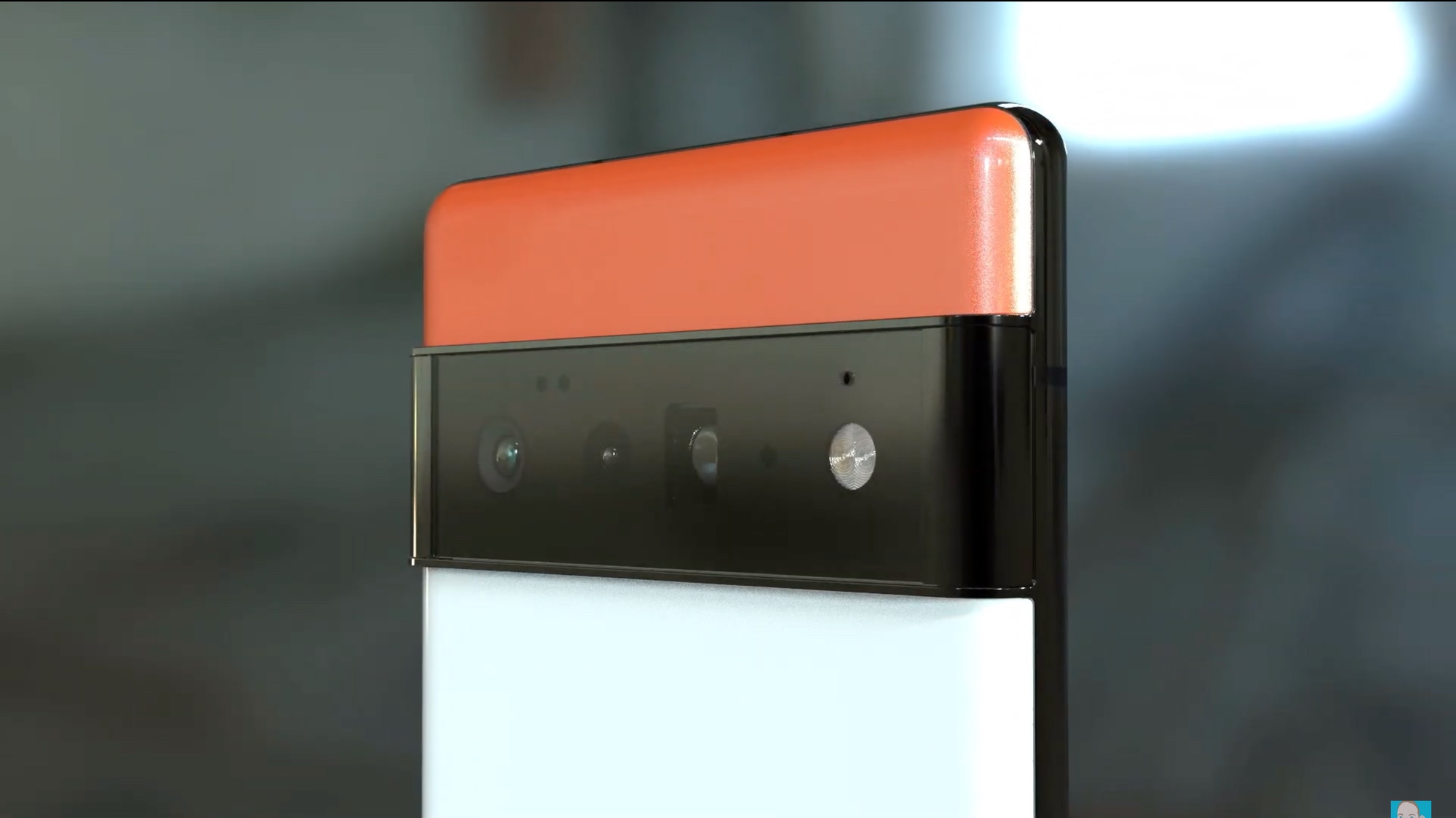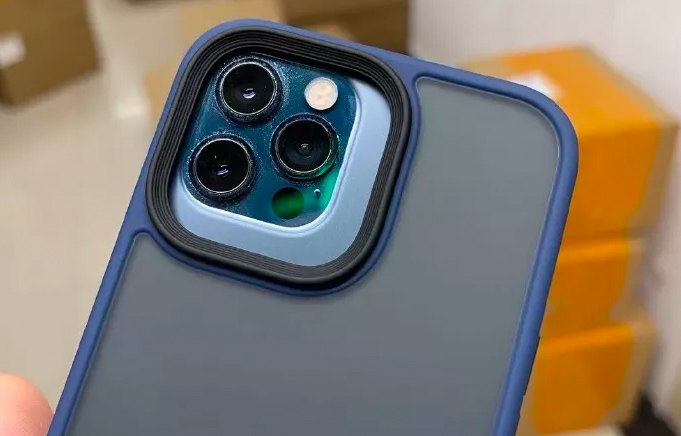iPhone 13 vs. Google Pixel 6 preview: Which phone will win?
Both the iPhone 13 and Pixel 6 are expected to arrive in just a few months, setting up a potential showdown this fall between two leading flagship phones. And thanks to a steady stream of rumors, we have a pretty good ideal of how an iPhone 13 vs. Google Pixel 6 battle is shaping up..
In the Pixel’s case, most of the beans have already spilled, thanks to pretty detailed specs leaks. In contrast, the iPhone 13 still maintains an air of mystery, though industry sources seem pretty sure about the main features and enhancements.
In the most recent specs dump, leaker Jon Prosser revealed details about the Pixel 6 and Pixel 6 Pro (or Pixel 6 XL, if you prefer). While it all looks like a top-tier Android phone, the key takeaways were the Google-made silicon and the purported five years of updates. We’re hoping this is all true because that would put the Pixel 6 on the iPhone 13’s level in terms of support.
In this iPhone 13 vs. Google Pixel 6 face-off, we’ll take a look at how these two phones should stack up come the fall. We expect both phones to present the best possible photography experiences on a phone. And the Pixel 6 will be the flagship Android experience, showcasing Google’s new Android 12 vision in all its Material You goodness. But the iPhone 13 will lead the charge on iOS 15’s huge laundry list of changes. Rest assured, this is going to be one fierce battle for to be the best phone overall.
iPhone 13 vs. Google Pixel 6: Specs
| iPhone 13 Pro (rumored) | iPhone 13 Pro Max (rumored) | Pixel 6 (rumored) | Pixel 6 Pro (rumored) | |
| Starting price | $999 | $1,099 | $699 | $899 |
| Screen size | 6.1 inches | 6.7 inches | 6.4 inches | 6.7 inches |
| Refresh rate | 120Hz | 120Hz | 120Hz | 120Hz |
| CPU | A15 Bionic | A15 Bionic | Whitechapel GS101 | Whitechapel GS101 |
| Rear cameras | Main camera, ultrawide and telephoto lenses, LiDAR sensor | Main camera, ultrawide and telephoto lenses, LiDAR sensor | 50MP main, 12MP ultrawide | 50MP main, 12MP ultrawide, 48MP telephoto |
| Battery size | 3,095mAh | 4,352mAh | 4,614mAh | 5,000mAh |
iPhone 13 vs. Google Pixel 6: Price
Pricing remains a mystery for both the iPhone 13 and Pixel 6. In Apple’s case, we can look at the iPhone 12’s pricing structure to get an idea. We expect that the iPhone 13 mini will start at $699, followed by the iPhone 13 at $799 — the same prices Apple set for the iPhone 12. Similarly, the Pro models are expected to start at $999 and reach $1,099 for the Max, the same as with the iPhone 12 Pro.
The Pixel 6’s pricing remains up in the air. However, if we had to venture a guess, we’d say that the smaller Pixel 6 might start at $699 while the larger Pro/XL model would come in at $899. The Pixel 5, the sole model last year, came in at $699, and we think Google might try to keep to that price for the smaller Pixel 6.
iPhone 13 vs. Google Pixel 6: Design
We’ve seen renders and dummy units come out in the past few months supposedly showing off the final designs for both the iPhone 13 and Pixel 6. In the case of the Pixel, Google seems to be diverging drastically from its previous design language. Up to this point, Pixels have been pretty spartan affairs. Other than unique colorways, like blue, orange, and pink, the Pixels have stuck with a muted design. The Pixel 6 might buck that trend completely.
Not only have we seen a tri-color design in some renders, but there might be a large camera bar spanning the width of the phones. It’s certainly a look, though it’s thus far been polarizing among Android and Pixel fans. For us, we welcome something new and unique.
Based on leaked renders, the iPhone 13 looks much the same as the iPhone 12, but with two key differences. For one, renders and alleged screen protectors show a much smaller notch for the Face ID camera and sensors. Apple looks to have moved the ear piece above the display, allowing for the Face ID tech to squish down. This is a welcome change to the much maligned notch, which has grown quite stale in recent years.

The other notable difference apparently slated for the new iPhone is the camera array arrangement on the iPhone 13 mini and iPhone 13. Instead of having the two lenses stacked vertically like on the iPhone 12, both of the phones look like they’ll have diagonally-opposed lenses. It’s not a huge change, but it’ll help the iPhone 13 stand out from its predecessor.
iPhone 13 vs. Google Pixel 6: Display
As with the iPhone 12, we expect there to be four iPhone 13 models: the 5.4-inch mini, the 6.1-inch regular version, the 6.1-inch Pro, and the 6.7-inch Pro Max. We also believe that Apple will continue to use OLED panels for richer colors and deeper blacks. Once you’ve gone OLED, you never go back.

One thing that might change with the iPhone 13 is the inclusion of a high refresh rate on the display for the Pro models. High refresh rates mean that scrolling is faster and smoother, supported games are also smoother, and the overall feel is slicker. The iPhone 13 Pro is rumored to be getting an adaptive 120Hz rate, similar to the Galaxy S21 lineup, and we think that will make iOS 15 on the iPhone 13 feel awesome.
For the Pixel, supposedly leaked specs point to two different-sized models: a 6.4-inch and a 6.7-inch. The smaller Pixel will apparently use AMOLED technology while the larger Pro could have a plastic OLED panel. These specs come courtesy of Jon Prosser’s leak not too long ago. Rumors suggest that both of the Pixel 6 models will feature 120Hz refresh rates, up from the 90Hz on the Pixel 5.
iPhone 13 vs. Google Pixel 6: Cameras
Other than software, where the iPhone 13 and Pixel 6 will likely shine is in the camera department. Both Apple and Google have really nailed the mobile photography experience, pushing the limits with crazy software that routinely places their devices among the best camera phones. We expect this will continue with 2021’s phones.

The iPhone 13 mini and iPhone 13 look to have two rear cameras, though we don’t know the megapixel count. It’s likely the phones will adopt the same camera array as the iPhone 12 and 12 mini — a main shooter alongside an ultrawide camera. The iPhone 13 Pro models should stick with three cameras, with a telephoto lens joining the other two shooters.
More importantly, all four iPhone 13 models are expected to have increased sensor sizes and sensor-shift stabilization, which will be an improvement over the more common optical image stabilization (OIS). This feature was previously limited to the iPhone 12 Pro Max.

Other improvements will likely come down to the ultrawide camera, with a six-angle lens, autofocus, and an f/1.8 aperture (versus the f/2.4 on the iPhone 12 series). All of this should noticeably improve ultrawide shots on the iPhone 13, especially on the Pro models.
For the Pixel 6, the smaller model looks to have two cameras: a 50MP wide-angle lens and a 12MP ultrawide. The larger Pixel 6 Pro is expected to add a third 48MP telephoto shooter. That hardware will work in tandem with Google’s AI prowess and many of the Pixel’s core shooting modes (Night Sight, astrophotography, etc.).
iPhone 13 vs. Google Pixel 6: Performance and 5G
We’re fairly certain that Apple is working on its new A15 Bionic system-on-chip (SoC), which ought to have some marginal improvements over the A14 Bionic found in the iPhone 12 series. Even so, the A15 Bionic is likely to beat the best that chip makers like Qualcomm, MediaTek, and Samsung have to offer. But it won’t be life-changing if you’re comparing performance to an iPhone 12.
Rumors also point to the iPhone 13 turning to the X60 5G modem from Qualcomm. For now, the X60 will offer some speed and aggregation improvements over the X55 in the iPhone 12.

The interesting thing about the Pixel 6 is that we’ve heard several strong rumors that Google is parting ways with Qualcomm. In doing so, it will design its own silicon in collaboration with Samsung and manufacture it on the Korean company’s 5nm process. This project is apparently codenamed Whitechapel and it will debut on the Pixel 6.
Whitechapel is set to be an interesting chip. Despite rumors suggesting that it won’t be able to match the Snapdragon 888 — the best SoC Android phones can currently use — Whitechapel is supposedly focused on pushing the limits of AI and machine learning on a phone, along with a new security chip called Dauntless. But some speculation indicates that it will be more in line with the Snapdragon 870. Whitechapel could also mean much longer support for the Pixel 6.
We don’t know yet what modem the Pixel 6 will use, but the X60 from Qualcomm seems like an obvious choice.
iPhone 13 vs. Google Pixel 6: Battery and charging
Other than the iPhone 12 Pro Max, battery life on the iPhone 12 series wasn’t anything to write home about. And Google has lately struggled to make Pixels that come close to the phones on the best phone battery life list. But for 2021, we hope that both phone series will change that.
For the iPhone 13, we’ve heard that the regular model and Pro will feature a 3,095mAh battery, while the Pro Max might have a 4,352mAh cell. Rumors claim that Apple is planning to use larger batteries across the board. That, in combination with the more efficient 5G modem, should improve longevity for Apple’s latest phones. But with the possibility of power-draining 120Hz displays, those gains could be canceled out. We have no reason to believe that Apple will go beyond the 20W wired/15W wireless charging that the iPhone 12 has.
Courtesy of Prosser’s leak, we have possible capacities for the Pixel 6 models. The smaller unit could have a 4,614mAh battery and the larger phone a big 5,000mAh one. These are both large cells and should help both Pixel 6 models last a while, especially if Google makes serious optimizations because it will control most of the hardware. The Pixel 5 supports only up to 18W fast charging, so we really hope Google ups that for the Pixel 6.
iPhone 13 vs. Google Pixel 6: Software
Software will be one of the key differentiating factors between the iPhone 13 and Pixel 6. Obviously, there’s the iOS vs. Android difference. But both phones will spearhead the new directions in iOS 15 and Android 12. Basically, it’s going to be a great year for fans of either camp.

With iOS 15, Apple is introducing a slew of new features. We have a solid breakdown of the most important iOS 15 features, but some of the highlights include a new Focus mode, a slight revamp to notifications, FaceTime updates, a Safari overhaul, improvements to Maps, and much more. Apple is leaving practically no stone unturned.
The Pixel 6 will come with Android 12 out of the box. This new version of Google’s mobile OS is a huge change from what we’ve seen in the last few years. The Material You design language builds on Material Design before it, creating a whole new look for Android. The system will pull colors from your wallpaper and theme itself accordingly; the Quick Settings toggles are larger and have more information; there’s a new privacy dashboard to get a look at what apps are using which permissions and when; and even the lock screen looks different, with a large clock that moves into the top left corner when notifications are present.
iPhone 13 vs. Google Pixel 6: Outlook
We’re still a couple of months out from our iPhone 13 vs. Google Pixel 6 showdown becoming a reality, but both devices are shaping up to be impressive ones. Not only will they be the flagships for iOS 15 and Android 12, respectively, but they’ll likely continue to push the mobile photography envelope. There’s plenty of reason to be excited about what’s to come.
For now, we’ll wait and bide our time until we get our hands on the new phones.
For all the latest Technology News Click Here
For the latest news and updates, follow us on Google News.
